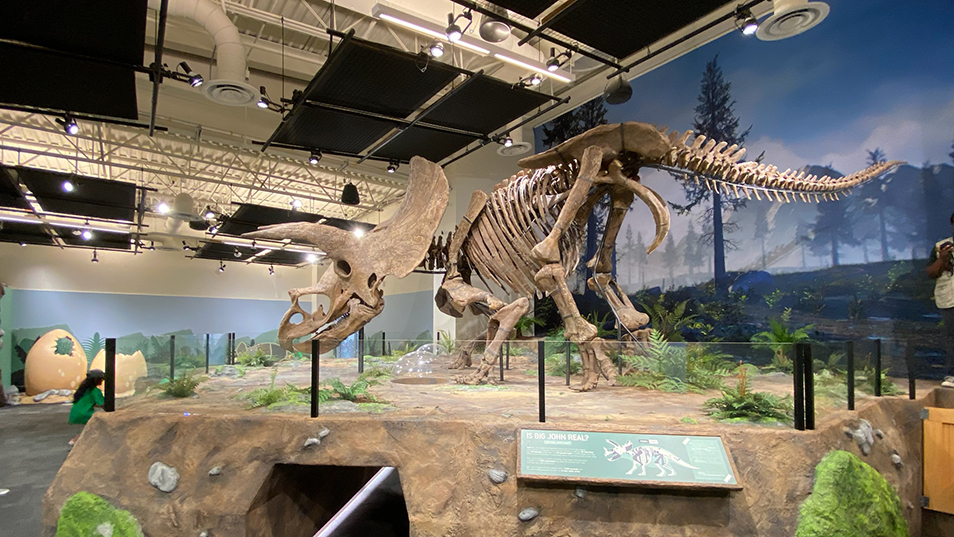Contact us
401 W. Kennedy Blvd.
Tampa, FL 33606-13490
(813) 253-3333
Note to parents: Buying a toy at the museum gift shop does more than stave off a temper tantrum. A recent student-faculty research project at the Glazer Children’s Museum found that it can influence a child’s learning habits and memory.

In Glazer Children’s Museum, “Big John”, the multi-million dollar dinosaur fossil, helped Psychology Associate Professor Sara Festini and Assistant Professor Jennifer Blessing, and students Sofia Condorelli ’24, Spencer Henning ’25, Adriana Lutzio ’25, Madison Curtis ’25, Stacey Hoffmeister ’25 and Desiree Gray ’24, excavate new data in museum and parenting influences on a child’s learning. Photo courtesy
More UTampa News